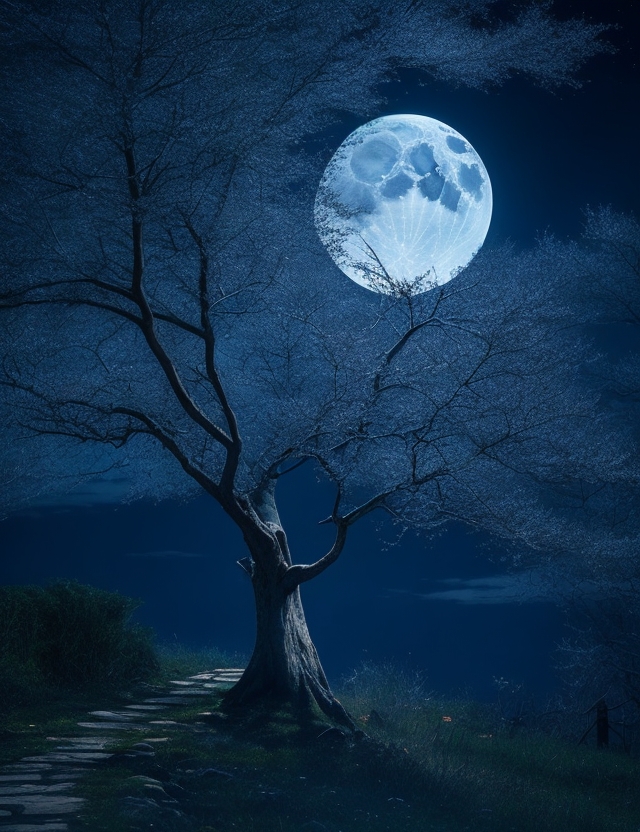Moon queen of the nights.
In the velvet night, a celestial pearl gleams,
Silent sentinel of our dreams.
Oh, moon, enchantress of the sky,
With your mystic aura, you catch our eye.
Your silver radiance, a gentle cascade,
Guiding wanderers with a soft serenade.
A lustrous beacon, so high above,
You inspire poets and artists with love.
Embracing darkness with ethereal grace,
You waltz with stars, in cosmic embrace.
A celestial dancer, twirling in space,
Transcending borders, defying all trace.
Oh, moon, your phases, a cosmic show,
From crescent slivers to a radiant glow.
With each cycle, a tale unfolds,
Of secrets whispered, yet never told.
The tides obey your celestial might,
Pulling and pushing, day and night.
You govern the rhythm of land and sea,
A celestial conductor, setting them free.
In your gentle glow, secrets reside,
Mysteries hidden in your lunar stride.
Oh, moon, celestial wonder so grand,
You hold the universe in your hand.
Forever we’ll gaze, entranced by your beam,
Bathing in your light, like a waking dream.
Oh, moon, enchantress of the night,
In your celestial dance, we find pure delight.



The poem “Moon Queen of the Nights” is a beautifully crafted piece that pays homage to the enchanting allure of the moon. It captures the ethereal and mystical nature of the moon, using vivid imagery and a melodic flow to create a sense of wonder and awe.
In terms of meter, the poem follows a predominantly iambic rhythm, with a mix of tetrameter and trimeter lines, creating a musical quality that enhances the enchantment of the moon. The rhyme scheme is AABB, contributing to the poem’s lyrical structure.
The poem can be classified as a descriptive and contemplative lyric poem, as it explores the moon’s symbolic and metaphorical significance. It praises the moon’s beauty, describes its various phases, and acknowledges its influence on the natural world.
The figure of speech employed in the poem is personification. The moon is depicted as an enchantress, a celestial dancer, and a lustrous beacon, emphasizing its allure and captivating presence. The moon’s influence over the tides is personified as the moon being a celestial conductor, setting the land and sea free with its rhythmic power.
The imagery in the poem is rich and evocative. Words like “celestial pearl,” “silver radiance,” and “velvet night” create vivid visual images that transport the reader into the nocturnal realm. The moon’s dance with the stars and its cosmic embrace convey a sense of cosmic harmony and beauty. The gentle glow of the moon and its phases unfolding like a tale add depth and mystique to the imagery.
Metaphorically, the moon represents not only a celestial body but also a symbol of inspiration and fascination. It is portrayed as a muse for poets and artists, igniting their creativity. The moon’s influence over the tides symbolizes its power over the ebb and flow of life, the cyclical nature of existence, and the hidden secrets and mysteries that reside within.
Overall, “Moon Queen of the Nights” is a captivating poem that celebrates the moon’s ethereal beauty and its profound impact on the human imagination. Through its exquisite imagery and melodic verses, the poem invites the reader to join in the awe and enchantment of the moon’s celestial dance.